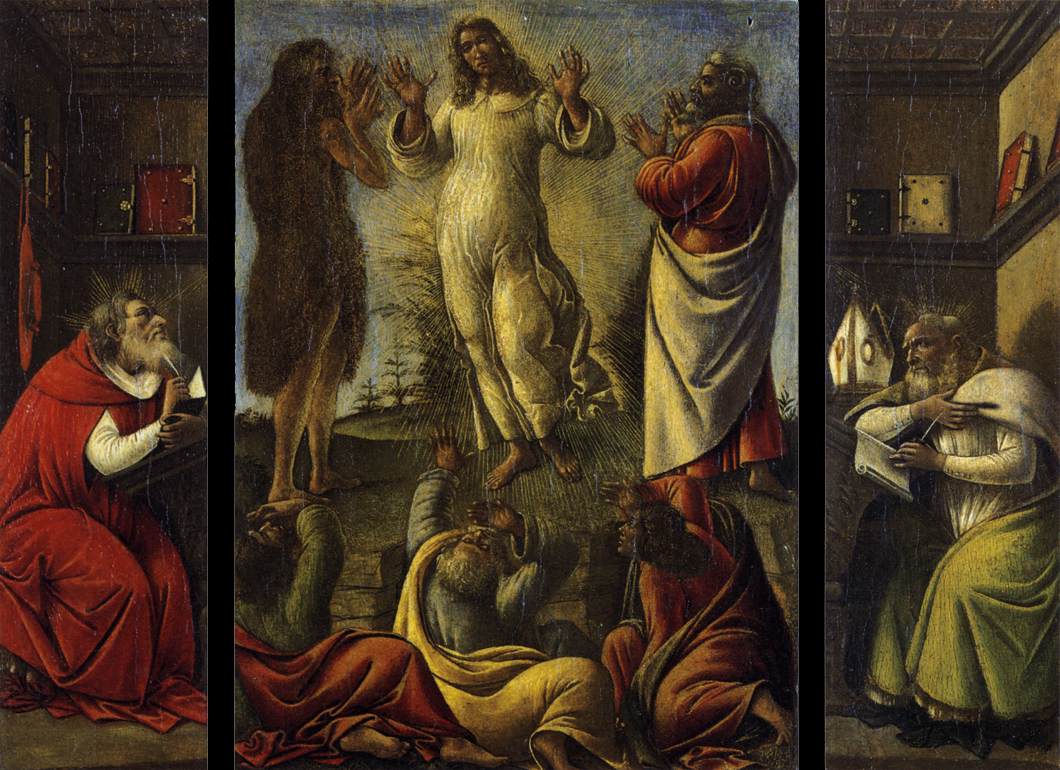Description
The painting "The Transfiguration, St Jerome and St Augustine" by Sandro Botticelli is a masterpiece of the Italian Renaissance. Made in the 15th century, this painting with an original size of 28 x 36 cm shows a complex composition that combines the scene of the Transfiguration of Jesus with the presence of Saints Jerome and Augustine.
Botticelli's artistic style is renowned for its elegance and delicacy. In this work, you can appreciate his soft brushwork technique and his ability to create contrasts of light and shadow. The figure of Jesus is in the center of the painting, surrounded by a cloud of light that makes him stand out. Saints Jerome and Augustine are on the sides, with an expression of astonishment and admiration before the transfiguration.
Color is another prominent aspect of this painting. Botticelli used a palette of soft and delicate colors, which create an atmosphere of serenity and peace. The gold and yellow tones of the cloud surrounding Jesus contrast with the blue and green tones of the landscape behind.
The history of the painting is interesting, as it is known to have been commissioned by Cardinal Giuliano della Rovere, who later became Pope Julius II. The painting was part of a series of works the cardinal commissioned to decorate his private chapel in the church of San Pietro in Montorio in Rome.
A little known aspect of this painting is that Botticelli is believed to have been influenced by Flemish artists in the making of this work. Botticelli is known to have had contact with Flemish artists during his stay in Rome, and it is believed that his soft brushwork technique and ability to create contrasts of light and shadow were influenced by them.
In conclusion, "The Transfiguration, St Jerome and St Augustine" by Sandro Botticelli is a masterpiece of the Italian Renaissance, noted for its elegance, delicacy and serenity. Its complex composition, soft brushwork technique, and soft color palette make this painting a unique and exceptional work of art.

